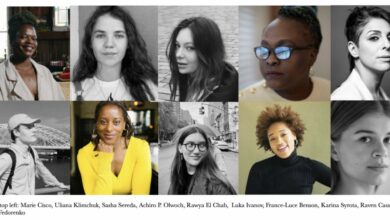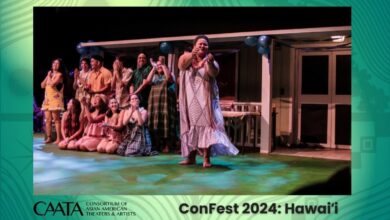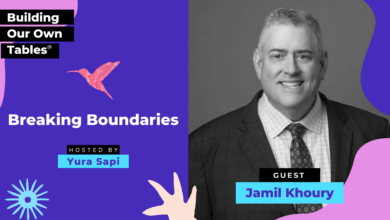Teaching Dramaturgy as a Creative Practice

According to my program, the main role of a dramaturg was threefold: to provide the historical and social context that helped inform the world of the play, to be available to answer any questions about subject material related to the play, and—when asked—to advise the director on the overall effectiveness of certain dramatic choices in relation to the dramaturgy of the play. Additionally, when working on university productions as a lead dramaturg, my role included leading talkbacks and creating lobby displays. While I enjoyed this work, I began to wonder about how my work as a dramaturg could change if I leaned into creating a fully-formed creative practice out of dramaturgy. How might talkbacks become less stagnant? And how might lobby displays expand and become more fully integrated into a production? During my time in undergrad and in my time as a graduate student, I was always expected to incorporate these elements into my role as a dramaturg, but I was never taught about the goals of a lobby display. I was never taught how to effectively collaborate with a director and a production team to even install a lobby display. In this time of questioning, I was curious about what the effects of teaching dramaturgs to be creatives could have on educational spaces. In many professional spaces, dramaturgs have been embraced as artists with a creative practice, which has allowed the role of the professional dramaturg to expand and has led to industry-wide innovation—as seen in the work of dramaturgs Anna D. Novak and Katy Rubin, Sulu Leonimm, and Liz Morgan, as well as many, many others. How, then, may more dramaturgical training programs expand and innovate by embracing the dramaturg as a creative?
I wanted to create a dramaturgical experience that was more akin to a highly curated and immersive experience.
As I continued on in my graduate program, I learned more about how to craft the perfect dramaturgy packet and how to master the art of the talkback. My love for dramaturgy grew deeper, and about halfway through my program I began to accept work as a freelance dramaturg, which continued post-graduation and into present day. In my freelance work, I began to crave more than providing research and the occasional talkback. I wanted to be able to provide a fully immersive dramaturgical experience, a full experience with a lobby display that incorporated art and sonic experiences. I wanted to create a dramaturgical experience that was more akin to a highly curated and immersive experience that incorporated aspects of visual and media art to more deeply tell the story of a production for both the internal team and the external audience. However, I quickly realized that despite a total of six years of theatrical training, I had no idea how to create something of this kind. So I started a journey outside of my educational and collegiate training to try to incorporate multidisciplinary artistic practices into my practice as a dramaturg. Rather than chasing the academic practice that I was so used to, I began to explore dramaturgy as a creative practice.
Because my background was primarily research-based, I didn’t know where to start in terms of where to learn of other artistic and creative practices. Since I considered dramaturgy to be a creative practice, I began to apply to various interdisciplinary artist residencies and artist training programs. While I was at a disadvantage because of my lack of a concrete visual arts background, the most common feedback that I got along with rejection notices was that the panelists and adjudicators understood why I was applying but did not see where a more creative-based approach could be incorporated into work as a dramaturg. As I got more rejection notices, I began to grow a bit frustrated. To me the answer was clear: if the playwright is an artist and creative, the dramaturg that collaborated on script consultations must also be considered an artist and creative. If the directing team, production team, and actors are considered artists, the dramaturg who shares the rehearsal room and helps inform stylistic decisions should also be an artist. In my experience, alienating the dramaturg from the title of artist and from the title of creative limits the potential of the dramaturgy.
If the directing team, production team, and actors are considered artists, the dramaturg who shares the rehearsal room and helps inform stylistic decisions should also be an artist.
Finally, after many rejections, I was selected to join the Artist INC Houston program in 2023. Artist INC is a development program for artists of all disciplines to strengthen their practice and enhance their entrepreneurial skills, and it was the first program that I encountered that considered my dramaturgy to be an artistic practice. In working alongside painters, collage artists, sculpture artists, dancers, and musicians, I began to create more helpful and collaborative connections and learned tools that would allow me to better implement many of the artistic ideas that I wished to explore through dramaturgy. After working with so many artists, I now understood how an actual art piece gets conceived, built, and installed. And the entrepreneurial skills that I gained helped me to better pitch the idea of an artistic dramaturg to theatre companies—though it has still been a challenge to get some folks to fully embrace the idea of the dramaturg as a creative. It was here that I finally learned to bridge the gap between the academic and the creative and fully promote both as two sides to the same coin.
When I dream big about what an expansion of the dramaturg’s role looks like within educational programs, it includes a collegiate literary department, an expanded timeline, and a role that is more fully incorporated into all aspects of a theatrical production. In my experience in graduate school and as a freelance dramaturg, I have only ever worked on an extremely tight production timeline. At most I’ve had three months to prepare dramaturgical materials, and at least I have had two weeks to prepare materials. This amount of time limits the quality and quantity of possible work. If educational programs incorporated student dramaturgs into the operating timeline of their season, budding dramaturgs could more easily gain insight into season planning—a learning opportunity that would be beneficial for any student interested in pursuing a career in literary management. From a freelance dramaturg perspective, if a theatre does not have a literary department or an on-staff dramaturg, integrating a freelance dramaturg earlier on in the production process can allow for more streamlined and extensive collaboration.




